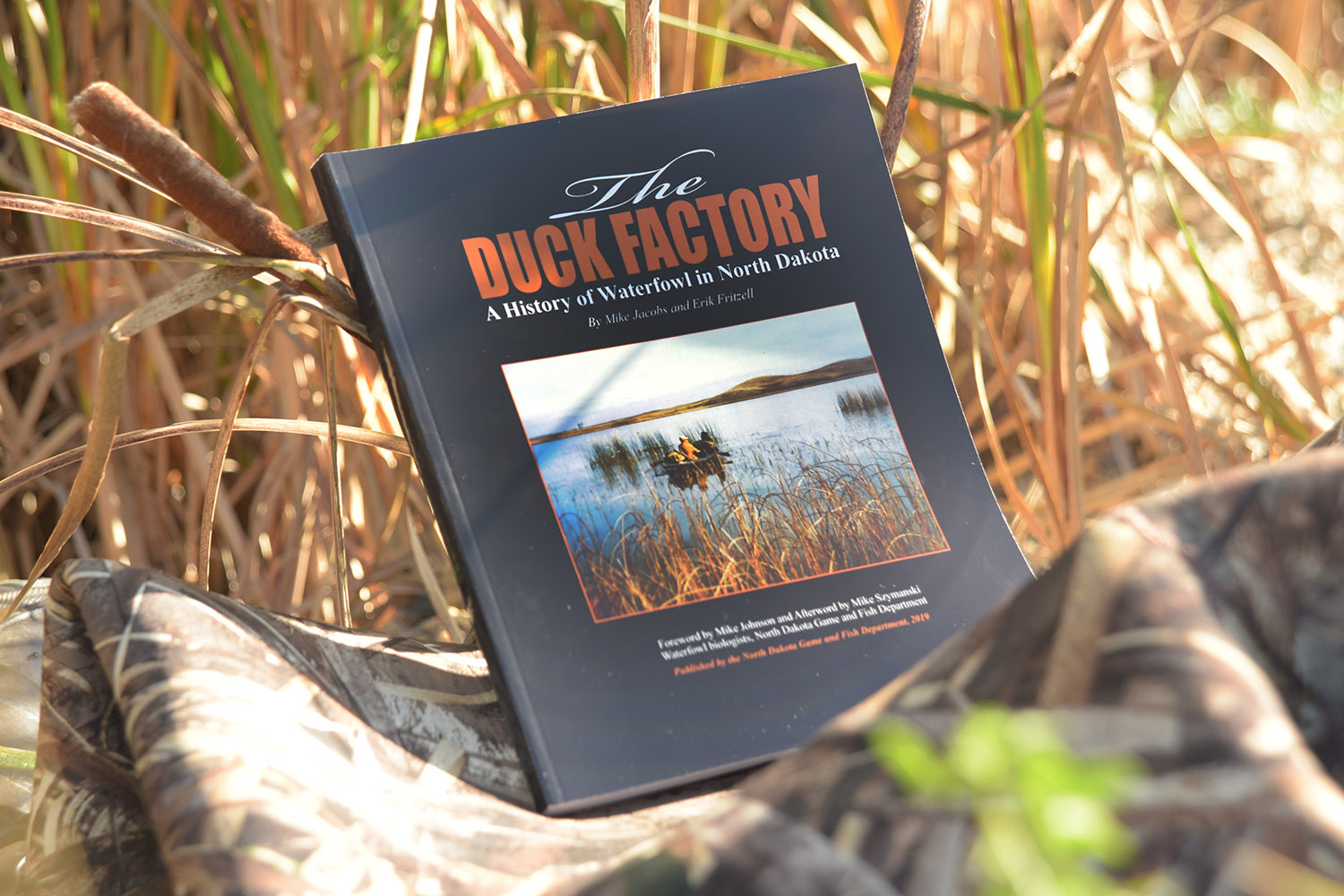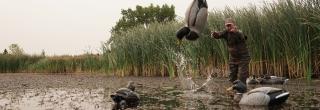
Start Hunting Ducks Over Water
North Dakota is fondly referred to as “The Duck Factory” and therefore offers arguably some of the best duck and goose hunting in the country. The best thing about it? It doesn’t take much to get started, follow the guide below to learn more.
1. Hunter Education
Anyone born after 1961 is required to take a certified hunter education course prior to obtaining a hunting license (with a couple of exceptions).
A one time apprentice license is available to those who would like to try hunting prior to taking the hunter education course. If you have an apprentice license, you must be accompanied by a licensed adult when hunting. Note: An individual who was issued an apprentice hunter validation license in 2020-21 may receive another.
Hunter education courses are taught by volunteers and offered throughout the year (though most are held January - March).
2. Buy a License
To legally hunt ducks in North Dakota you need the appropriate licenses. Note: If you are unsure if you meet North Dakota residency requirements for purchasing a license, take a look at our residency page.
Residents
Must possess the following licenses:
- Harvest Information Program registration,
- Fishing, Hunting, and Furbearer Certificate,
- Either a Small Game License (Not required of residents under age 16) with a General Game and Habitat License
or
a Combination License (includes Small Game, General Game and Habitat, Furbearer, and Fishing licenses), - Federal Migratory Bird Stamp (Duck Stamp) - required of all hunters 16 years of age and older.
Nonresidents
Must possess the following licenses:
- Harvest Information Program registration (exception: not required to hunt crows),
- Nonresident Fishing, Hunting, Furbearer Certificate,
- General Game and Habitat License,
- Federal Migratory Bird Stamp (Duck Stamp) - required of all hunters 16 years of age and older,
- Nonresident waterfowl license - two types are available:
- A statewide license, good for two 7-day periods or one 14-day period, or
- A zone-restricted license that requires the nonresident to select hunting zones (see **Nonresident Waterfowl Hunting Zones) according to the following restrictions:
- A nonresident must select Zone 1 or Zone 2 for one seven-day period and Zone 3 for the other seven-day period, or
- Zone 3 for the full 14 days or two seven-day periods, or
- Zones 1 and 3 concurrently for the same 7-day period or zones 2 and 3 concurrently for the same 7-day period. This option effectively reduces the license to seven days only, as the two 7-day periods are run at the same time.
Nonresident Youth Hunting Licenses - A nonresident under age 16 need only purchase a North Dakota resident fishing, hunting and furbearer certificate and a North Dakota resident general game and habitat license to hunt small game and waterfowl, except swans and wild turkeys. To be eligible, a nonresident youth must not turn 16 before September 1 of the year for which the license is issued, and must possess a certificate of completion for a certified hunter education course. The nonresident youth may only hunt under the supervision of an adult family member or legal guardian.
3. Be Aware of the Regulations
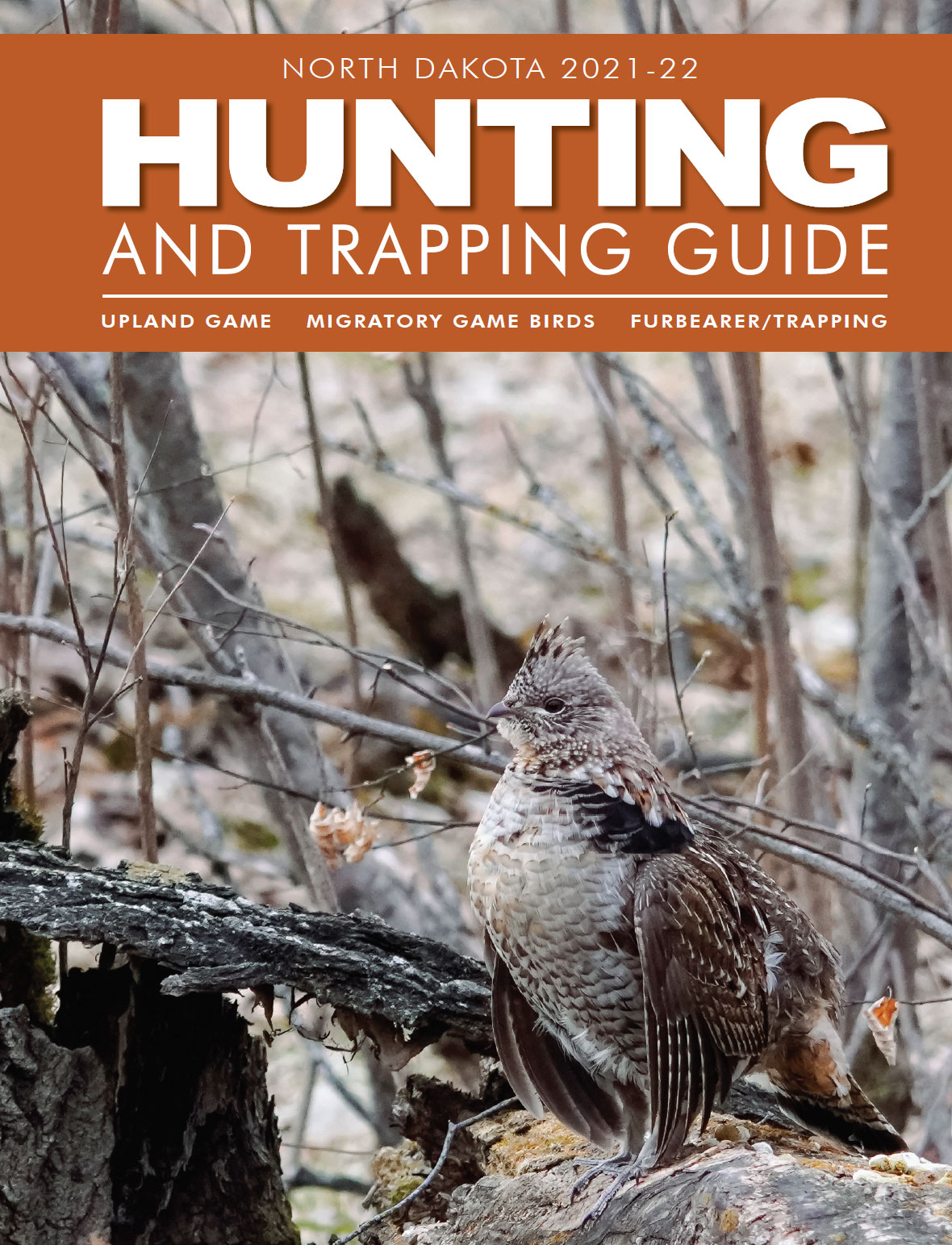
- Hunting regulations may change annually.
- Regulations and season dates are not finalized until after the annual season proclamation has been signed by the governor.
- After the proclamation has been signed, a hunting guide is published.
Be aware that regulations for waterfowl may differ some based on species. Know the species before you shoot. The Central Flyway Council has some good duck identification resources here.
4. Gather Some Gear
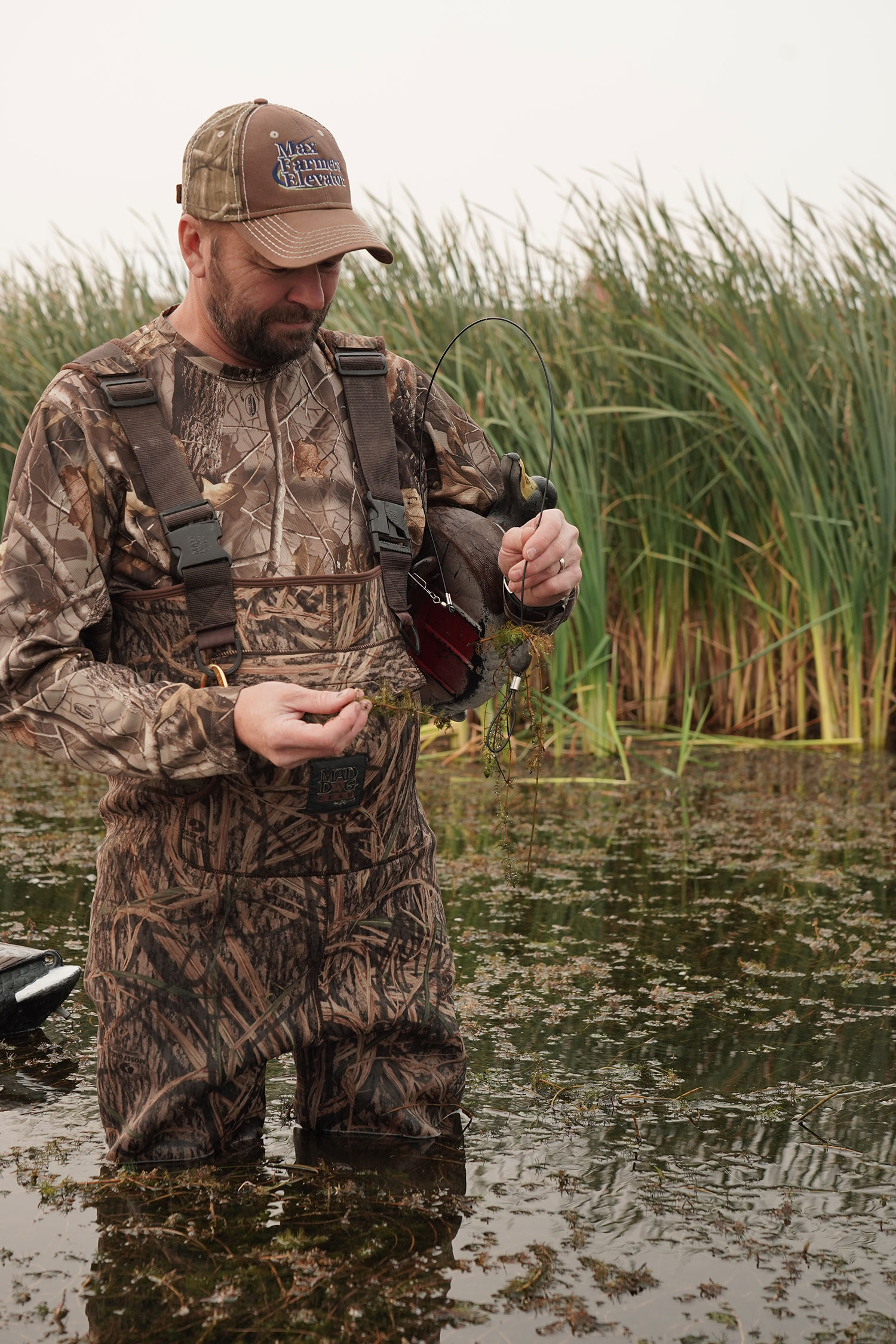
Required gear:
Firearms – Recommended: Shotgun, 10, 12, 16 or 20 gauge, any action, with modified choke OR specialized choke for waterfowl hunting
Ammunition – Non-toxic shot is required when hunting waterfowl. Typical shot sizes used for waterfowl are BB, 1, 2, 3, and 4 depending on the size of ducks and individual preference.
Note: A firearm and ammunition are all that is necessary to either jump shoot or pass shoot (see Hunting Tips - Water Hunting Strategies below) ducks, but the optional gear listed below can be helpful in your pursuit.
Optional gear:
- 12-24 Decoys:
- Mallard decoys are a good universal pick for beginning hunters as they can attract a variety of species. Likewise, Scaup (Bluebills) are a good choice for attracting divers.
- Decoy line comes in braided, monofilament and PVC. Line length between decoy and weight should be slightly longer than the maximum depth water you plan to hunt.
- Decoy weights come in a variety of shapes and weights. Lighter weights can be used in smaller, shallower ponds while heavier weights are recommended for large, deep ponds.
- Decoys bag: decoy bags come in a variety of sizes and materials typically holding 24-36 decoys. Pick one that best suits your needs and comfort.
- Duck call: Duck calls can be a very effective tool to bring ducks into shooting range. There are many makes and models of duck calls on the market made from a variety of materials. Pick a call that fits your comfort level and budget.
- A Hen Mallard call is standard and would be a good one to start with
- Other specialty duck calls:
- Pintail whistles – mimics the whistle of drake pintail
- Drake mallard – mimics the whistle of a drake mallard
- Teal – mimics quacks of hen teal
- Diver – mimics “brrr” sound made by scaup, canvasback, redheads and other diving ducks
- Multi-species – can be used to mimic the calls of multiple duck species
- Wood duck – mimics squeal of wood duck
- Waders: a must have for hunting waterfowl in wetlands. Waders can be made of canvas, neoprene or breathable materials. Season use, temperatures, and your budget should be considered when choosing waders.
- Camouflage outerwear: with significant swings in temperature between early and late waterfowl season, having one or more camouflaged or drab-colored outer coverings that accommodate seasonal temperatures is important.
- Camo or drab hat: Billed caps not only help keep the sun out of the hunter’s eyes, but also conceals his or her head. Stocking caps or beanies deliver the same concealment, yet add a warm layer.
- Gloves: Help keep hands dry and warm. Insulated rubber gloves keep hands dry and protected when deploying and picking up decoys.
- Ear and eye protection
- Gun sling
- Game strap
- Chair
- Face covering: cloth gaiter, mask or face paint to aid in concealment.
- Life jacket: recommended for placement/pick up of decoys and picking up downed birds, especially on unfamiliar waters.
Hunting with Dogs
Hunting with a water dog can add an entirely new element to waterfowl hunting. A well-trained water dog can provide not only companionship while hunting but can also be an extremely useful tool in retrieving downed game and reducing crippling loss.
- Dog safety – Its important not to forget that while hunting, a dog will be exposed to both weather and cold-water conditions. Keeping a mindful eye on your partner may prevent life threatening conditions, such as hypothermia.
- Dog Safety gear:
- Neoprene vest: Provides an insulating layer and concealment.
- Drying apparatus: Drying your dog between retrieves will help reduce expose to the elements. Material such as microfleece can be rung out and reused
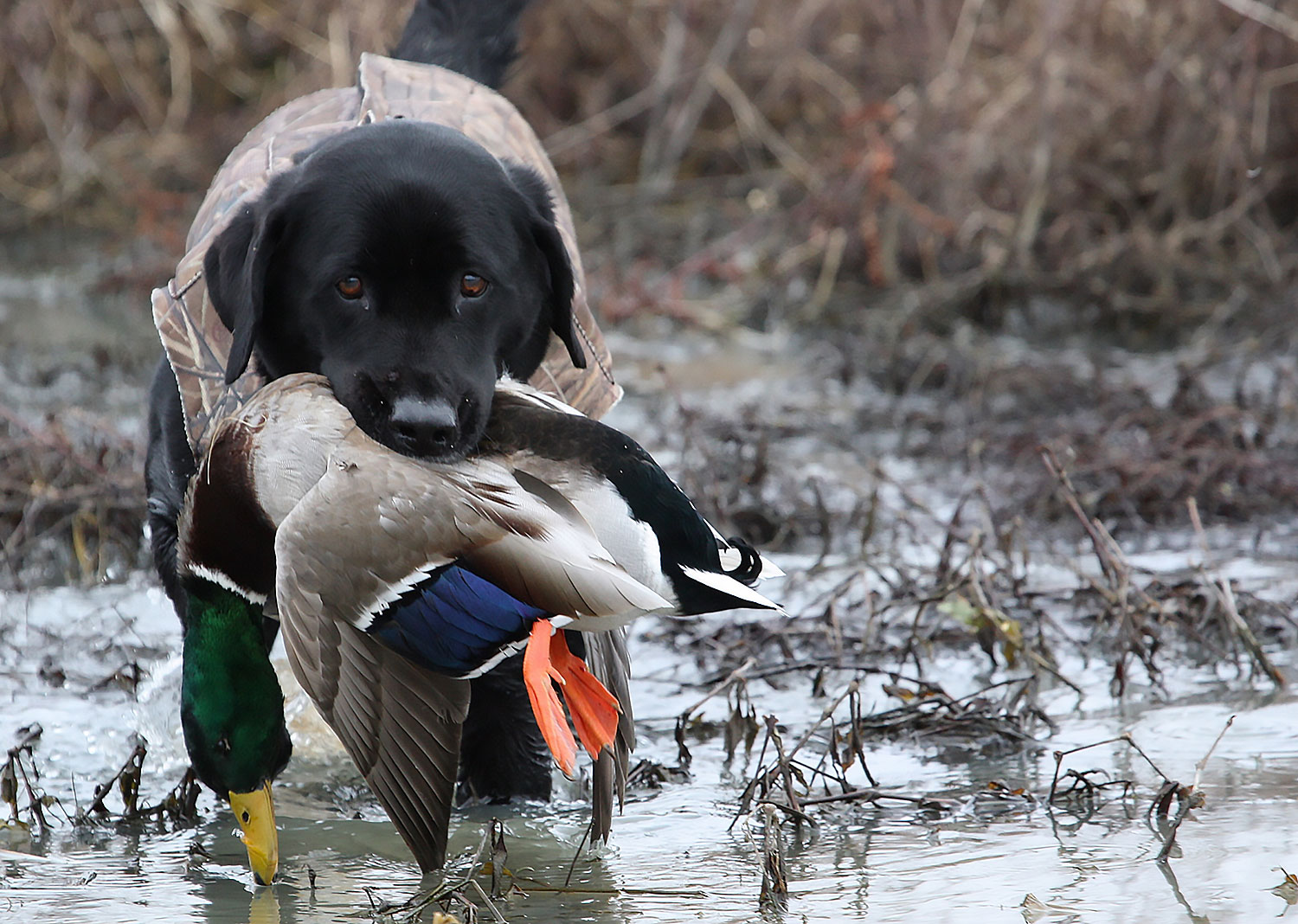
5. Find a Hunting Spot

General Information
- Public Lands: Some public lands like many U.S. Forest Service National Grasslands and North Dakota Department of Trust Lands are open to hunting, however special regulations may apply at certain locations.
- Private Lands: Unposted private lands outside of towns and other restricted areas may be hunted.
- Private lands may be posted physically with signs or electronically to prohibit hunting. You must check for both prior to entering land to hunt.
- Lands in the PLOTS program are marked with PLOTS signs and may be hunted without permission.
- While it is not required that you get landowner permission to hunt unposted lands, it is good practice to check in with the landowner where you plan to hunt so they know you're there.
- It is unlawful to hunt or pursue game in unharvested cereal or oilseed crops without permission of the owner or tenant. Cereal crops include alfalfa, clover, and other grasses grown for seed. Oilseed crops include sunflower, safflower, rapeseed or canola, crambe, soybeans, and flax.
Wetland Duck Specific Information
Scouting for suitable wetlands to hunt can greatly improve odds of harvesting waterfowl.
- Locate a wetland, wetland complex or area where waterfowl are concentrated.
- Hunting an area off the beaten path or that has seen limited hunting pressure will increase odds of success.
- Identify wetlands that are suitable for your hunting situation:
- Wetlands need to be shallow enough to put out and pick up decoys and retrieve downed birds or chase cripples.
- If you hunt with a dog, locating a hunting spot with dry ground, shallow water or structure, such as a muskrat hut, is a must.
- Pick a wetland with suitable cover. Wetlands with dense emergent vegetation around the perimeter provide good concealment.
- Have a back-up plan in the event that someone is in the same spot you picked when you show up to hunt.
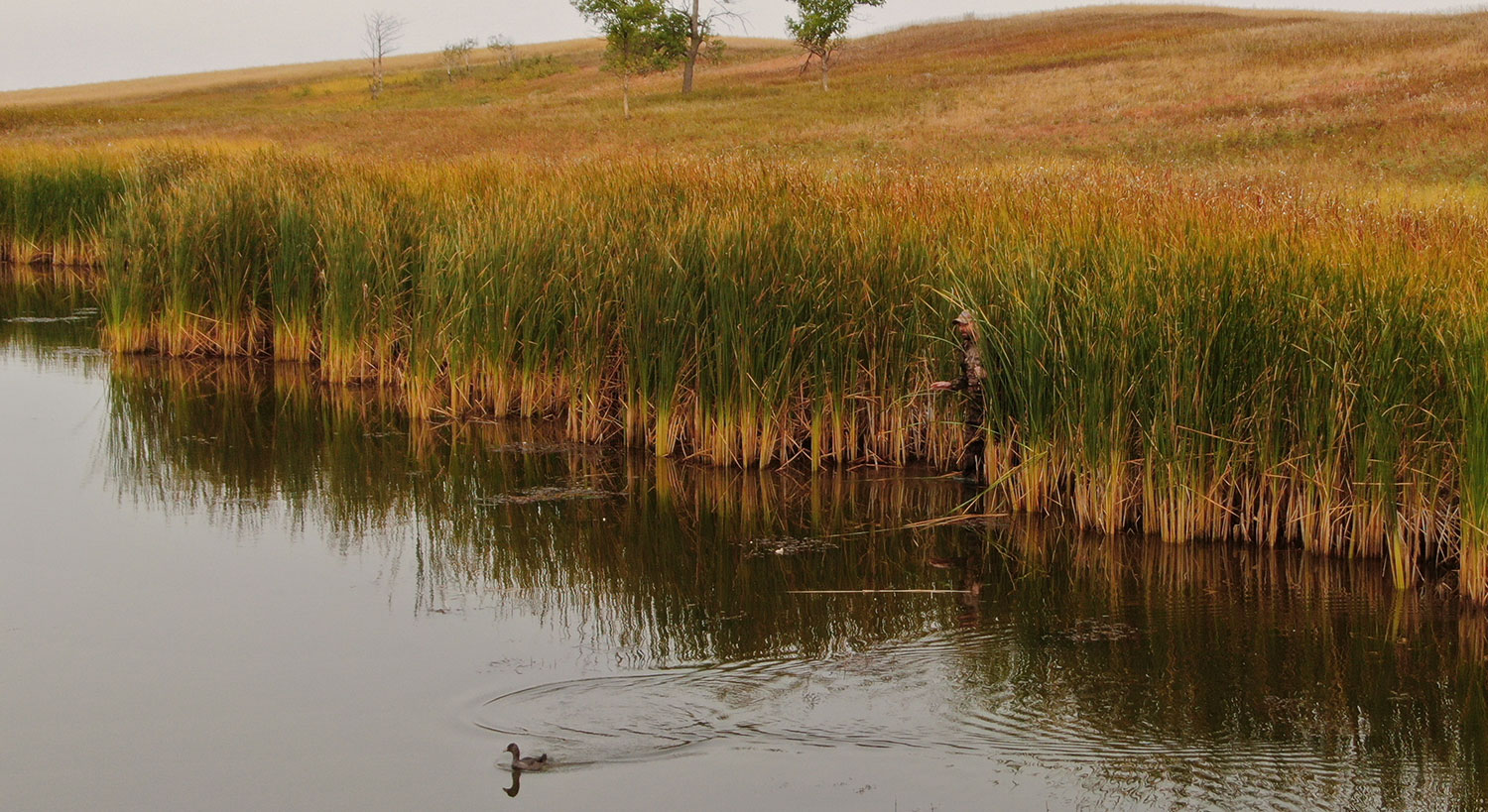
Hunting Tips
Water Hunting Strategies
Jump Shooting – This method entails taking a concealed approach and sneaking up on loafing waterfowl and when close enough, flushing or jumping the birds, picking a single bird at a time to target.
Pass Shooting – Encompasses many aspects required for hunting ducks over decoys such as scouting and picking a desirable hunting location, but instead of decoying birds, hunters intercept birds passing over a particular course.
Hunting over decoys – This method is designed to decoy ducks within close shooting range.
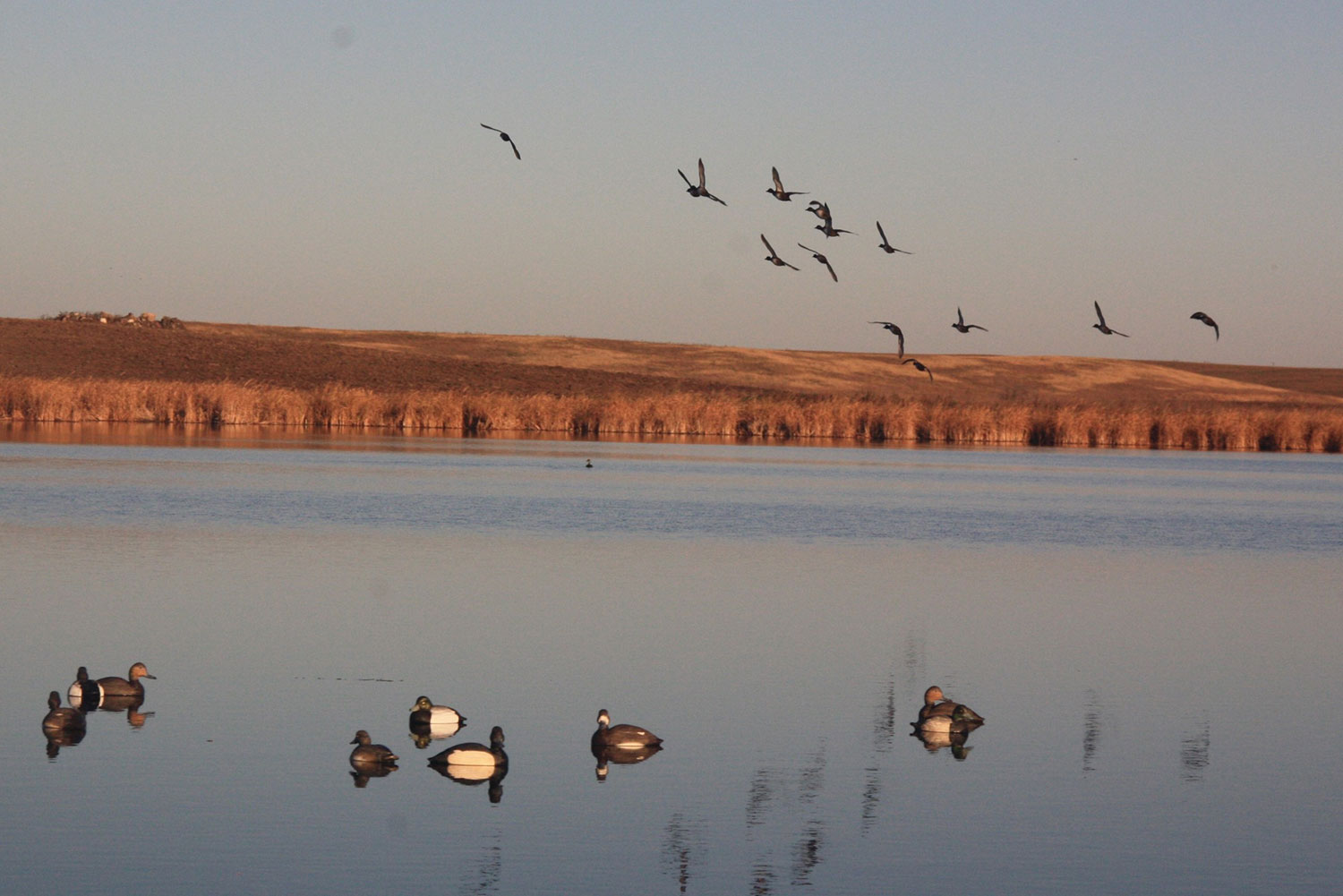
Decoy Placement
Proper decoy placement is often debated while sitting in a duck blind, but ultimately how one deploys decoys is based on experience and personal preference. Keep in mind if something is not working, don’t be afraid to change things up.
Considerations when setting out decoys:
- Place your outermost decoys no further than you are comfortable shooting. Ducks will frequently skirt or attempt to land on the outside of the decoy spread
- Play the wind – Ducks often land into the wind. Deploying your decoys upwind or perpendicular to the wind increases your odds of ducks flying/landing from in front of you.
- Don’t set up looking into the sun – this makes spotting incoming birds and identification difficult.
- Don’t be afraid to modify your spread or move to a more desirable location if ducks are not working your spread.
Example decoy spreads
When placing decoys leave an open space(s) for ducks to land in. An open area within the decoys will entice ducks into close shooting range as they attempt to land amongst the decoys.
Openings do not have to be exceptionally large. A ten foot by ten foot opening can be sufficient. Decoys may also be deployed in separate pods with enough space for ducks to land between them.
The J-hook works well with a crossing wind (coming from the hunters left or right).
This decoy spread is shaped like a “J” with more numerous decoys being placed upwind at the curved end of the “J” with decoys being strung out in a narrow grouping as they are placed down wind from the curve.
Ducks approaching from downwind follow the long part of the “J” spread landing in the curved end with the bulk of the decoys.
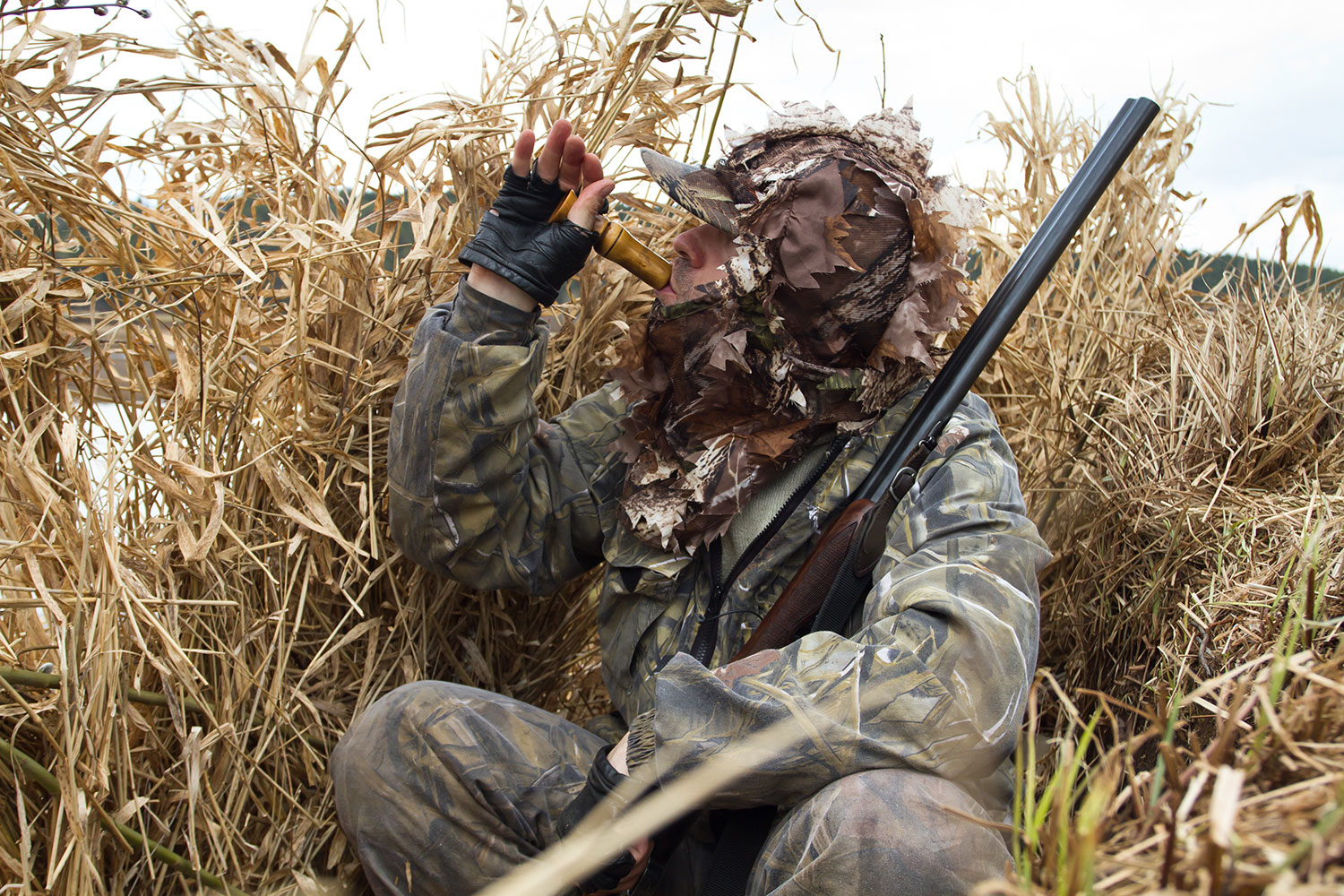
Calling ducks
- Using a duck call to get the attention of and attract ducks to your spread can be very effective.
- Calling is often more effective on ducks that have not been heavily hunted or birds that recently moved or migrated into a new area.
- Be conscious of how ducks are reacting to calling and alter accordingly.
- Over calling – Even lightly pressured ducks may flare due to over calling. Adjust amount and volume of calling to keep them interested.
- Call shy - ducks that experience hunting pressure may become call shy. If you have not had new birds move into your area for some time, try calling less or not at all.
Calling the shot
NOTE: Always identify the species of the bird you are targeting prior to firing. Be sure that your target fits your bag limit.
Low light v. bluebird conditions
Birds may be more likely to decoy under low light conditions, but they are harder to identify – colors will not stand out as much. May have to identify based on other characteristics such as shape and size.
Pick one bird to shoot at. Don’t flock shoot.
In theory, one would think there is a better chance of hitting one or more birds by shooting at a flock but that is most often not the case. Plus, multiple species of waterfowl may come decoy in the same flock that have different limits
Only take ethical shots within shooting distance and your comfort zone
Shooting too far may increase the number of birds you cripple and need to chase. Shoot within established shooting safety zones. Watch for dogs that break and other non-game species which you might encounter while waterfowl hunting (shorebirds, raptors, pelicans, etc.)
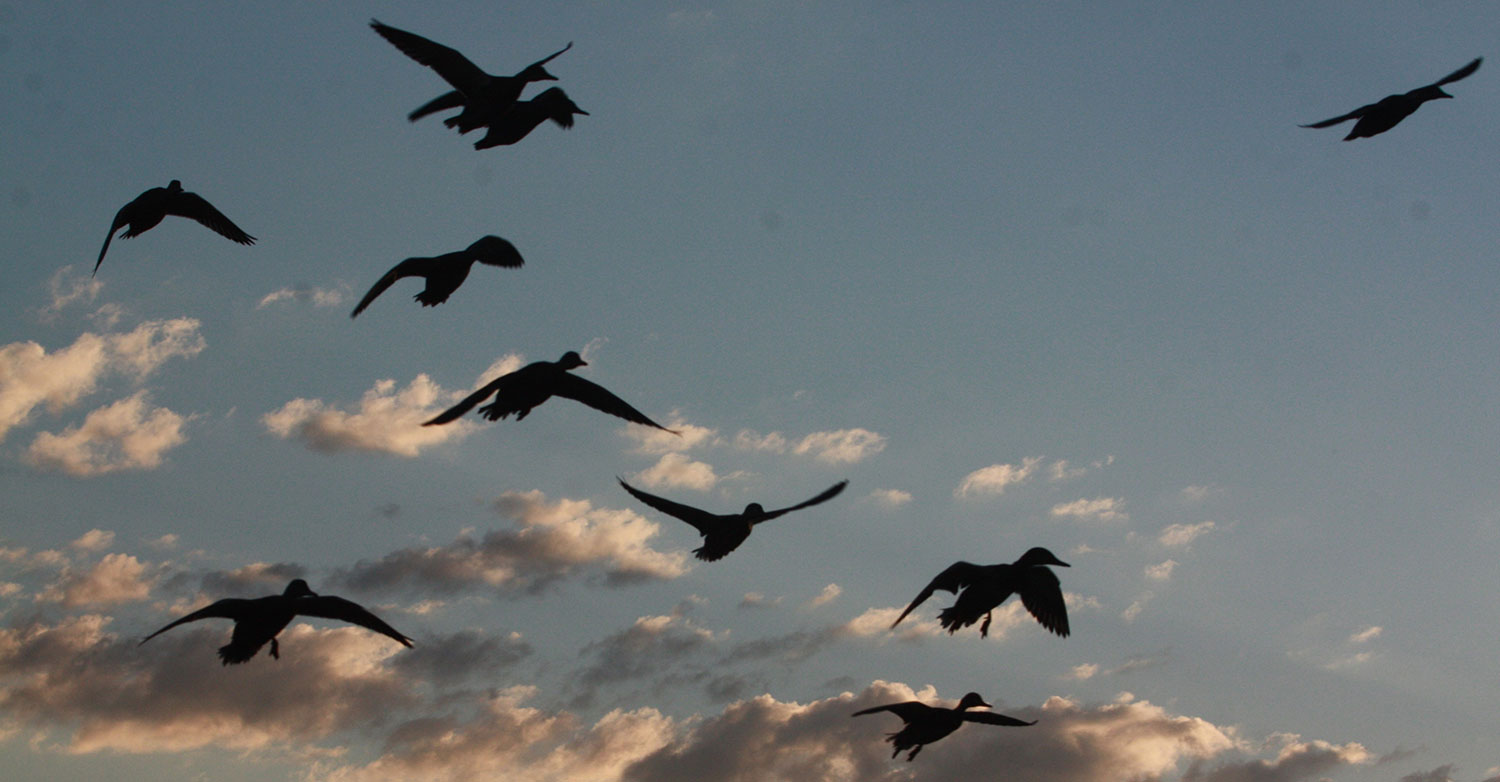
Banded Birds
As a migratory game bird, ducks might be carrying a metal leg band – if you harvest any birds with bands, report the band numbers at: www.reportband.gov.
Tutorials and Resources
Ask an Expert
Do you still have questions about hunting ducks in North Dakota?

